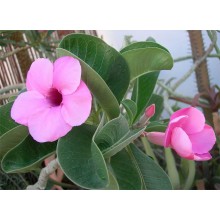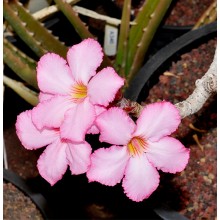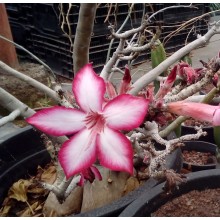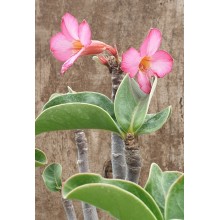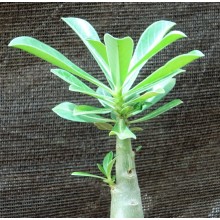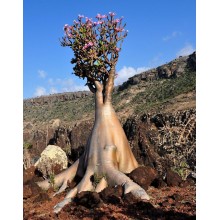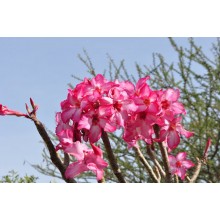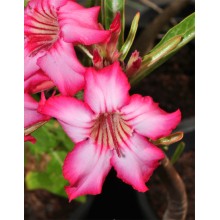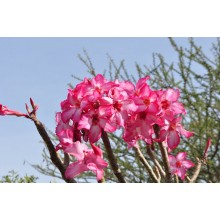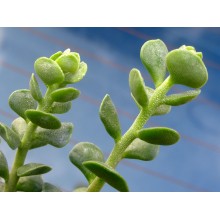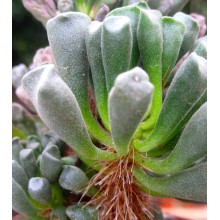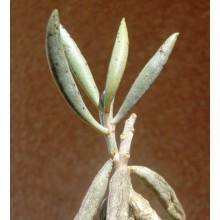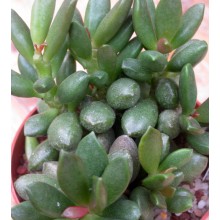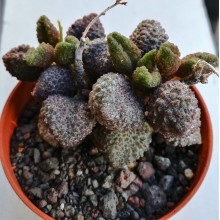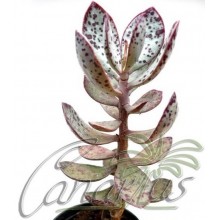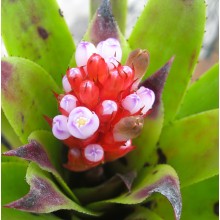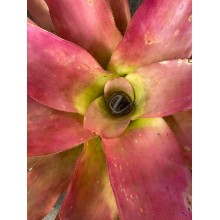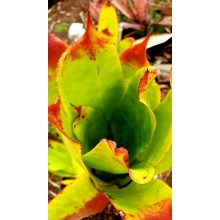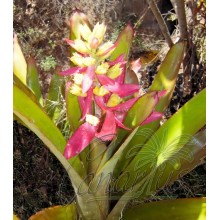Plantas generales Hay 1882 productos.

Si te gustan las plantas exóticas, acabas de llegar al lugar correcto. Canarius ofrece plantas exóticas difíciles de conseguir, que raramente se encuentran en tiendas de jardinería. Nuestra tienda tiene especies naturales, así como híbridos poco frecuentes. Ofrecemos plantas exóticas procedentes de las Islas Canarias.
Los pedidos se envían a cualquier lugar de Europa y también a todo el mundo. Los paquetes llegarán a su casa en pocos días después de ser enviados (tenga en cuenta que también necesitamos algunos días para el procesamiento). No dude en contactar con nosotros si tiene alguna pregunta.
Subcategorías
-
Suculentas
Los desiertos y las áreas secas son el hogar de las plantas más interesantes. Canarius ofrece una selección creciente de plantas suculentas de la máxima calidad, ya que han sido cultivadas al aire libre, bajo el pleno sol de las Islas Canarias.
Las suculentas o "plantas crasas" son especies que retienen agua, que están adaptadas a las condiciones de sequía. Estas plantas almacenan succum (jugo, agua) en sus hojas, tallos o raíces, y con frecuencia muestran un aspecto grueso y carnoso.
-
Exóticas
Las plantas exóticas son especies originarias de otras partes del mundo y que normalmente, tienen un carácter ornamental, una vegetación exuberante, con flores coloridas, formas inusuales... Aquí puede encontrar una gran variedad de plantas exóticas: desde bromelias y heliconias, hasta palmeras y plantas de interior.
Las plantas exóticas no tienen un uso específico. Los coleccionistas compran este tipo de plantas por su rareza, para decoración interior o exterior, en función de sus características. -
Frutales y Medicinales
Los árboles frutales, las hierbas y las plantas medicinales nos permiten mejorar nuestra salud y alimentación. En esta sección, cada tipo de planta tiene efectos saludables, tanto los frutales (Feijoa, piña, Fina de Jete...), como plantas para la salud, como Graviola, Aloe vera, Callisia fragrans...
En el metabolismo normal de todos seres vivos, el organismo produce algunas sustancias a partir de los nutrientes presentes en el entorno; algunos de estos químicos son parte del proceso en todo (o casi todo) tipo de especies. Normalmente, los componentes útiles están concentrados en algunas de sus partes: hojas, semillas, flores...
¡Encuentre su planta saludable y cómprela online!
-
Especiales
En canarius.com tratamos de ir más allá de los límites en el campo de la botánica. En nuestra tienda en línea tratamos de facilitar la compra de plantas de cualquier parte del mundo. Por eso, cultivamos desde las especies más comunes hasta las plantas más especiales, como podrá ver en esta sección.
-
Adenium boehmianum
Adenium boehmianum
The most delicate-looking of all the wild adeniums, this "bohemian" Adenium has pink flowers with rounded petals and round tipped spathulate leaves.
30,50 € -
Adenium dhofarense
Adenium dhofarense
New species of Adenium from the Dhofar region, with especially attractive, bottle-shaped stems. The shrub is "polymorphic"and can be tall or squat depending on the conditions, or even pendant when growing on a vertical cliff.
36,20 € -
Adenium obesum Kenya
Adenium obesum Kenya
Adenium obesum is the well known rose-of-the-desert and it is widespread in Africa and very variable.
21,40 € -
Adenium socotranum
Adenium socotranum
Socotranum is one the most admired species in the genus Adenium. It attains a huge size, of two, three or more meters in height. Showy clusters of pink flowers are regularly produced in Adult plants.
42,60 € -
Adenium somalense
Adenium somalense
Adenium somalense is one of the most beautiful caudiciform plants. It grows wild in Somalia and through the Rift Valley into Ethiopia, Kenya, and Tanzania. Depending on the area, its trunk can take different shapes from a fat shrub to a small tree (more than 4 m), differently from the similar species A. obesum whose caudex is mainly underground. The showy...
41,00 € -
Adenium somalense Isiolo
Adenium somalense Isiolo
Not all Adenium somalense grow in Somalia. This material was originally collected North of Isiolo, in Kenya. In this region, these adeniums grow very tall, to 4 m, with spectacular gnarled stems.
28,70 € -
Adenium somalense- Large 3
Adenium somalense- Large 3
Adenium somalense is one of the most beautiful caudiciform plants. It grows wild in Somalia and through the Rift Valley into Ethiopia, Kenya, and Tanzania. Depending on the area, its trunk can take different shapes from a fat shrub to a small tree (more than 4 m), differently from the similar species A. obesum whose caudex is mainly underground. The showy...
75,00 € -
Adromischus caryophyllaceus CG62 Robertson
Adromischus caryophyllaceus CG62 Robertson
Beautiful Adromischus with erect branches and round-spathulate leaves, coated with a blueish-grey wax. It bears in summer relatively large flowers with purple mid-stripes.This clone was collected in Robertson, in the Western Cape and recorded as CG62.
10,20 € -
Adromischus cooperi
Adromischus cooperi
Large, branched, cont.= 8,5 cm - A slow growing South African species with swollen purple leaves, with grey-purple blotches, and undulating leaf apex. It will enjoy some light shade in the hottest months.
12,20 € -
Adromischus filicaulis ssp. filicaulis
Adromischus filicaulis ssp. filicaulis
This Adromischus has long grey leaves, more or less spotted, on erect stems. It is another variable species of this interesting genus.
10,20 € -
Adromischus marianae v. herrei
Adromischus marianae v. herrei
Weird beauty from the South African desert. It is a must for collectors of Crassulaceae or extreme succulent plants. This Adromischus has short dark leaves with an incredibly rough surface which is a masterpiece of nature. It changes colours through the seasons from green to brown, red or more.
12,30 € -
Adromischus triflorus
Adromischus triflorus
Pot = 8,5 cm. Variable species native to South Africa. It forms clusters with thick, silvery green leaves. This form has ovate-pointed leaves with abundant reddish speckles, tending to become more intense in bright light.
12,20 € -
Aechmea 'O' Rourke'- (Androlaechmea 'O' Rourke')
Aechmea 'O' Rourke'- (Androlaechmea 'O' Rourke')
Supreme cold-hardy hybrid of the outrageously beautiful Androlepis skinneri and the robust frost-hardy Aechmea distichantha.
51,20 € -
Aechmea ampla
Aechmea ampla
Mid to Large bromeliad from Bahia, still uncommon in cultivation. Leaves are glossy, yellow-green, with the tips "painted with red nail polish".
41,20 € -
Aechmea aquilega
Aechmea aquilega
Large landscaping bromeliad with wide, hard leaves. Colour turns from green to purple or orange-yellow according to light and temperature. Ornamental pink-orange inflorescences in Summer, lasting 2-3 months. Hardy to light, short frost.
24,80 €
En estos momentos tenemos pocos productos en esta categoría Plantas generales




















